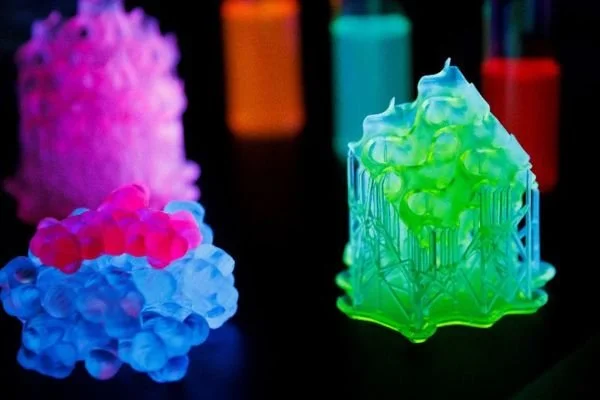Wearable Technology Delivers Smart Clothing
/Women Leading Visual Tech: Interview with Madeleine Gong of Wearable X
LDV Capital invests in people building businesses powered by visual technologies. We thrive on collaborating with deep, technical teams leveraging computer vision, machine learning, and artificial intelligence to analyze visual data. We are the only venture capital firm with this thesis.
Our Women Leading Visual Tech series is here to showcase women whose work in visual tech is reshaping business and society.
In the lead-up to our second live community event, “Radically Transforming Fashion”, Abby Hunter-Syed, a former Partner at LDV Capital, had a chance to chat with our keynote speakers. This time it was all about smart clothing and innovative textiles. (Note: After five years with LDV Capital, Abby decided to leave LDV to take a corporate role with fewer responsibilities that will allow her to have more time to focus on her young kids during these crazy times.)
Madeleine Gong, Lead Apparel Engineer at Wearable X
Many brands experiment with smart clothing. To name a few: Under Armour, Levi's, Tommy Hilfiger, Samsung, Ralph Lauren, and Google. They release clothes designed to provide extra functionality, beyond traditional use. Such articles are made of advanced textiles and smart fabrics – fabrics interweaved with sensors and additional hardware.
Meet Madeleine Gong of Wearable X and apply for your free ticket now (just a few spots left!).
Madeleine is a designer who specializes in integrating hardware and apparel to create a unique experience. Wearable X is a fashion tech company that brings together design and technology to create a better quality of life. Their signature Nadi X yoga pants with haptics help yogis elevate their practices.
As a Parsons graduate, Madeleine is trained in fashion and textile design. Combining this skill set with a curiosity for technology and innovation, she envisions an industry that empowers people through their clothes while maintaining a clean aesthetic.
Abby: What is the most exciting thing happening in wearable technology today?
Smart Yoga Pants by Wearable X
Madeleine: I think that the integration of technology into clothing is getting smarter and more seamless. The idea of getting a personalized output that impacts your day-to-day life from the clothes you wear is really exciting to me.
Abby: How will new materials & wearable tech impact us?
Madeleine: We are experiencing a breakthrough in innovative textiles. As integrated technology becomes softer, people will be able to access the data that matters to them most, without abandoning comfort and style.
Abby: What breakthroughs in materials science are you most excited for?
Madeleine: I think the recent advancements in mushroom leather are fascinating. Also, the introduction of skincare into textiles is really exciting.
Abby: What are haptics & why should we care what they are?
Madeleine: Haptics is simply a fancy way of saying vibrations. Touch is arguably the strongest of the 5 human senses. Touch evokes emotion. By creating a platform of touch (vibrations) on the skin through textiles, we essentially are creating a language on the body. Nadi X uses the language of vibrations to deliver feedback to the yogi directly on the body to guide one through a pose.
Abby: In 5 years what should our clothing be able to do for us?
Madeleine: I think that clothing creates experiences for us. Style is a creative outlet. I am excited for this sentiment to be elevated to a future where we can gain a sense of ourselves and the outside world simply through the clothing on our bodies.
Another example of smart clothing is from our portfolio company Cionic who has developed a wearable ‘Neural Sleeve’. This neural sleeve is superpowering the human body. Their bionic clothing helps people with cerebral palsy, multiple sclerosis, stroke, and other neurological disorders regain functional movement in everyday activities. It’s a different application of the same technology.
Their recent Neural Sleeve gait study shows an “average improvement” of 143% in foot drop, a common symptom of multiple sclerosis (MS) and other conditions that hinder mobility.
Their Cionic Sleeve made to look like a legging. Discreet enough to wear under your clothing, but fashionable enough to show off. Here are a couple of photos of Cionic’s latest prototype. They are collecting feedback on usability in their trials to help refine both the functionality and look of the sleeve.
Their team is working hard with regulatory bodies and academic research centers to validate the performance and effectiveness of the Cionic Neural Sleeve.
Get involved in one of Cionic’s trials or sign up for early access when their product is available.
If you missed our virtual event, watch the video recording of Madeleine’s keynote below and check out our event recap.


















